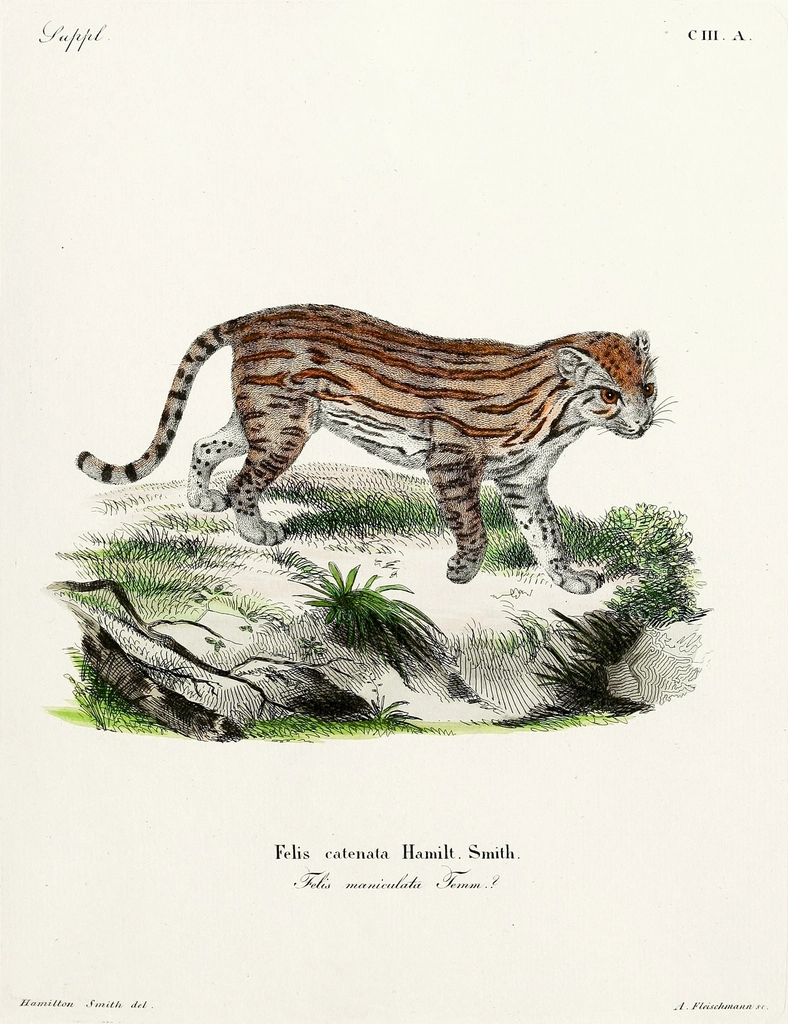Have you ever wondered if wild cats can be just as loving and gentle as the pets curled up on our couches? The truth might surprise you! While many wild cats are known for their fierce independence, there are a handful of species that display remarkable affection—not only among themselves but sometimes even toward humans. Their touching social bonds, playful antics, and heartwarming behaviors prove that the world of wild felines is far more complex and emotional than most people imagine. Grab your favorite mug of tea, because we’re about to journey through the wild with the world’s most affectionate feline species still roaming free!
Serval: The Playful Charmer of African Grasslands

If you’ve ever seen a serval leap through the tall grasses of Africa, you’d swear you were watching a ballet dancer. But it’s not just their acrobatics that captivate people. Servals are surprisingly affectionate creatures, especially with their mates and offspring. They use gentle head rubs and soft purrs to communicate love and reassurance. Mothers are incredibly doting, spending hours grooming and playing with their kittens. Even in the wild, servals have been known to bond closely with humans who respect their space. Their playful nature, curious gaze, and sweet vocalizations make them irresistible to anyone lucky enough to catch a glimpse.
Caracal: The Velvet-Eared Sweetheart

Caracals are instantly recognizable thanks to their tufted ears, but their soft side is what really stands out. These medium-sized wild cats form strong attachments to their mates, often nuzzling and grooming each other for hours. Siblings stick together long after leaving the den, showing a loyalty that’s rare among wild animals. Caracals also communicate affection through soft mews and chirps, and mothers are fiercely protective, cradling and licking their young with endless patience. Their affectionate behavior isn’t just for show—it’s a crucial part of their survival, helping them build trust and cooperation within their family groups.
Cheetah: Gentle Souls in a High-Speed Chase

Cheetahs may be the fastest animals on land, but their hearts are just as quick to love. Unlike other big cats, cheetahs are not solitary by nature. Brothers form lifelong coalitions, sticking together through thick and thin. These “bro squads” spend hours lounging, grooming, and even cuddling for comfort. Cheetah mothers are legendary for their devotion, teaching their cubs to hunt and play but also showering them with nuzzles and purrs. Their gentle temperament is so pronounced that cheetahs often seek out human companionship in sanctuaries, forming bonds that last a lifetime.
Puma (Cougar): The Quiet Companions

Pumas, also called cougars or mountain lions, are masters of stealth, but they have a softer side that few get to witness. While mostly solitary, pumas show deep affection toward their cubs. Mothers are attentive, guiding their young with gentle nudges and patient teaching. Cubs stay with their moms for up to two years, learning everything from climbing to hunting—always under the watchful, loving gaze of their mother. When siblings are together, play fighting and snuggling are common, and these bonds can last even after they’ve grown. There’s an understated warmth to the puma’s interactions, proof that affection runs deep even in the most elusive wild cats.
Clouded Leopard: The Shy Sweethearts of the Forest

With their dreamy, cloud-like spots, clouded leopards look like they stepped out of a fairy tale. These shy cats are seldom seen, but their affectionate behavior is well-documented. Pairs often engage in mutual grooming, and mothers dote on their cubs with constant care. Clouded leopards communicate affection through gentle head butts and soft vocalizations. When raised in captivity with care, they form close bonds with their keepers, sometimes choosing to rest beside them or rub against their hands. Their quiet, tender nature is a reminder that love can thrive even in the shadows of dense forests.
Lion: The Ultimate Family Cat

Lions are famous for their roaring strength, but they are also the most affectionate of all the big cats. Living in close-knit prides, lions spend much of their time demonstrating love and loyalty to one another. Head rubbing, licking, and even full-body cuddles are part of daily life in the pride. Cubs are doted on by mothers, aunts, and even older siblings, creating a web of warmth and care. Male lions, despite their fearsome reputation, often play gently with cubs and nuzzle their mates. Watching a pride interact is like peeking into a giant, furry family reunion—full of love, laughter, and the occasional squabble.
Ocelot: The Spotted Sweetheart

Ocelots may be small, but their hearts are enormous. These stunning cats are known for their striking patterns and big, soulful eyes. In the wild, ocelot mothers are fiercely devoted, nursing and grooming their young with tireless affection. Siblings play and sleep snuggled together, building bonds that help them survive. Ocelots are also surprisingly social with humans, sometimes approaching with curiosity and even allowing gentle touches. Their playful antics and loving demeanor have made them symbols of gentleness in many cultures, proving that the best things really do come in small packages.
Snow Leopard: Affection in the Icy Mountains

Life in the high mountains is tough, but snow leopards manage to find warmth in each other. These elusive cats are rarely seen by humans, but hidden camera footage reveals a world full of affection. Mothers tend their cubs in cozy dens, grooming and cuddling them to keep warm. Siblings tumble and play in the snow, their laughter echoing across the peaks. Even adult snow leopards, usually solitary, come together to share close bonds during mating season. Their affectionate nature helps them survive in one of the harshest environments on Earth.
Fishing Cat: Love by the Water’s Edge

Fishing cats are true water lovers, prowling rivers and marshes with unmatched skill. But it’s their affectionate side that’s truly remarkable. Mothers are attentive, teaching their kittens to fish and swim through playful lessons and gentle nudges. Family groups huddle together for warmth and safety, and mutual grooming is common. In sanctuaries, fishing cats often bond with their caretakers, showing off with playful splashes and soft head bumps. Their love of water is matched only by their love for each other—a rare combination in the wild cat world.
Black-Footed Cat: Tiny Yet Tender

Don’t let their small size fool you—the black-footed cat is a powerhouse of affection. Native to southern Africa, these petite hunters are known for their fierce independence, but mothers are incredibly loving. They spend hours grooming and playing with their kittens, teaching them the skills they need to survive. Kittens stay with their mothers for months, snuggling close at night for warmth. Even though these cats are rarely seen by people, researchers observing them are often struck by their gentle, loving interactions.
Sand Cat: The Desert’s Little Darling

Life in the desert is harsh, but sand cats have found a way to make it feel like home. These small, fluffy cats are deeply affectionate, especially among family members. Mothers are dedicated protectors, often moving their kittens to keep them safe from danger. Playful wrestling and grooming sessions help build strong family bonds. Sand cats also communicate through soft chirps and purrs, expressing comfort and love in the quiet desert night. Their endearing behaviors make them a favorite among researchers and cat lovers alike.
Jaguarundi: The Social Butterfly

Jaguarundis might not look like your typical wild cat—they’re long and slender, almost otter-like—but their affectionate personalities set them apart. Unlike many wild felines, jaguarundis often live in pairs or small groups. They spend hours grooming, playing, and communicating through a variety of chirps and calls. Mothers are attentive, guiding their kittens with patience and love. Their playful nature and social bonds have earned them the nickname “the social butterfly of the wild cats.”
Rusty-Spotted Cat: The Teeny-Tiny Cuddlebug

As one of the smallest wild cats in the world, the rusty-spotted cat packs a lot of love into its tiny frame. Found in India and Sri Lanka, these cats are known for their affectionate interactions. Mothers are gentle and nurturing, often carrying their kittens in their mouths to safer spots. Siblings huddle together in cozy dens, sharing warmth and security. Their playful antics and sweet demeanor make them irresistible, and even in the wild, their affectionate nature is hard to miss.
Geoffroy’s Cat: The Loyal Little Hunter

Geoffroy’s cats are small, agile, and full of personality. Found across South America, these cats form close bonds with their young. Mothers are attentive and protective, teaching their kittens to hunt through gentle guidance. Siblings play and explore together, building trust and cooperation that last a lifetime. In rare cases, Geoffroy’s cats have been known to bond with humans, displaying surprising affection for those who earn their trust.
Eurasian Lynx: The Gentle Giant of the Forest

The Eurasian lynx is the largest of the lynx species, but its heart is even bigger. These majestic cats are known for their tender treatment of their young. Mothers are incredibly patient, teaching their kittens the ways of the forest with gentle nudges and playful swats. Siblings remain close, often seen napping and grooming each other long after leaving the den. The Eurasian lynx’s loving behaviors highlight the importance of family and connection in the wild.
Marbled Cat: The Elusive Embracer

Marbled cats are masters of disguise, blending into the dense forests of Southeast Asia. Despite their secretive nature, these cats show remarkable affection toward their families. Mothers are nurturing, keeping their kittens close and safe. Mutual grooming is common, helping to strengthen bonds between siblings. Their tender interactions often go unseen by human eyes, but camera traps have revealed a world of love hidden among the trees.
Pallas’s Cat: The Fluffy Enigma

Pallas’s cats, with their round faces and thick fur, look like living plush toys. They inhabit the cold steppes of Central Asia, where warmth is hard to come by. Family members huddle together for heat, sharing body warmth and affection. Mothers are protective, often seen grooming and comforting their kittens. Even though these cats are famously grumpy-looking, their actions reveal a surprisingly tender side.
Asiatic Golden Cat: The Forest’s Secret Sweetheart

Rarely seen in the wild, the Asiatic golden cat is a mystery to most. But those who’ve observed them know they are deeply affectionate animals. Pairs often stay close, sharing grooming sessions and quiet moments of companionship. Mothers are attentive, guiding their kittens with patience and care. Their soft vocalizations and gentle touches show that, even in the darkest forests, love finds a way.
Leopard Cat: The Adaptable Affectionist

Leopard cats are masters of adaptation, thriving in forests, grasslands, and even near human settlements. Despite their solitary reputation, they display moments of profound affection with their young. Mothers are dedicated, teaching their kittens survival skills through play and gentle guidance. Siblings stick together, helping each other navigate the challenges of the wild. Their adaptability is matched by their capacity for love, making them one of the most intriguing wild cats.
Bobcat: The North American Nurturer

Bobcats are iconic in North America, known for their tufted ears and spotted coats. But it’s their nurturing nature that truly sets them apart. Mothers are fiercely protective, often moving their kittens to keep them safe from predators. Playful pouncing and grooming help strengthen family bonds. Even as adults, bobcats sometimes form loose associations, showing that affection isn’t reserved just for close kin. Their gentle interactions offer a glimpse into the softer side of life in the wild.

Linnea is a born and bred Swede but spends as much time as possible in Cape Town, South Africa. This is mainly due to Cape Town’s extraordinary scenery, wildlife, and atmosphere (in other words, because Cape Town is heaven on earth.) That being said, Sweden’s majestic forests forever hold a special place in her heart. Linnea spends as much time as she can close to the ocean collecting sea shells or in the park admiring puppies.






